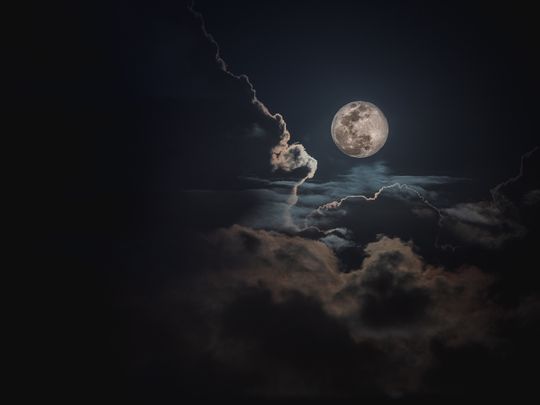
There is the moon that you know – bright, luminous, up there in the night sky – and the one that you don’t know. The one that smells like gunpowder and was once 10 times bigger!
Click start to play today’s Spell It, where you can find the word “moon”.
Here are some surprising facts about the moon:
1. Moon dust has a smell
The moon’s surface is covered with dust. US-based Apollo astronauts often found their spacesuits covered in it when they climbed back into their lunar modules. According to a January 2019 report in National Geographic, American astronaut Harrison Schmitt from the Apollo 17 mission likened its smell to that of gunpowder. Astronauts even developed a kind of hay fever after being exposed to the dust, with sneezing and chest congestion to boot. Luckily, since there’s no wind on the moon blowing the dust around, the symptoms don’t persist for long.
2. It used to look much bigger
The moon was once about 10 times closer to the Earth than it is now, so it once appeared 10 times larger. Some computer simulations theorise that it could have even been 12 to 19 times closer – that’s a distance of just 20,000 to 30,000km away, rather than 384,000km away, as it is right now. Every year, the moon goes 3.78cm further away from the Earth.
3. The surface can be boiling hot or freezing cold
According to US space agency National Aeronautics and Space Administration (Nasa) the moon’s average surface temperature is 107 degrees Celsius in the day and -153 degrees Celsius at night. Since it doesn’t have a protective atmosphere, extreme temperatures are common during the day and night.
4. You see only one side
The moon rotates around its axis, like the Earth, but since its rotation lasts about the same number of days it takes to orbit around our planet (27 days), we only get to see one face of the moon. The phenomenon is called captured rotation, and before the Space Age, the other side of the moon was completely unknown and invisible to man. Today, we know that the far side of the moon has more craters and a more rugged terrain than the near side, with a thicker crust and less volcanic activity.
Did you know these facts about the moon? Play today’s Spell It and tell us at games@gulfnews.com.




